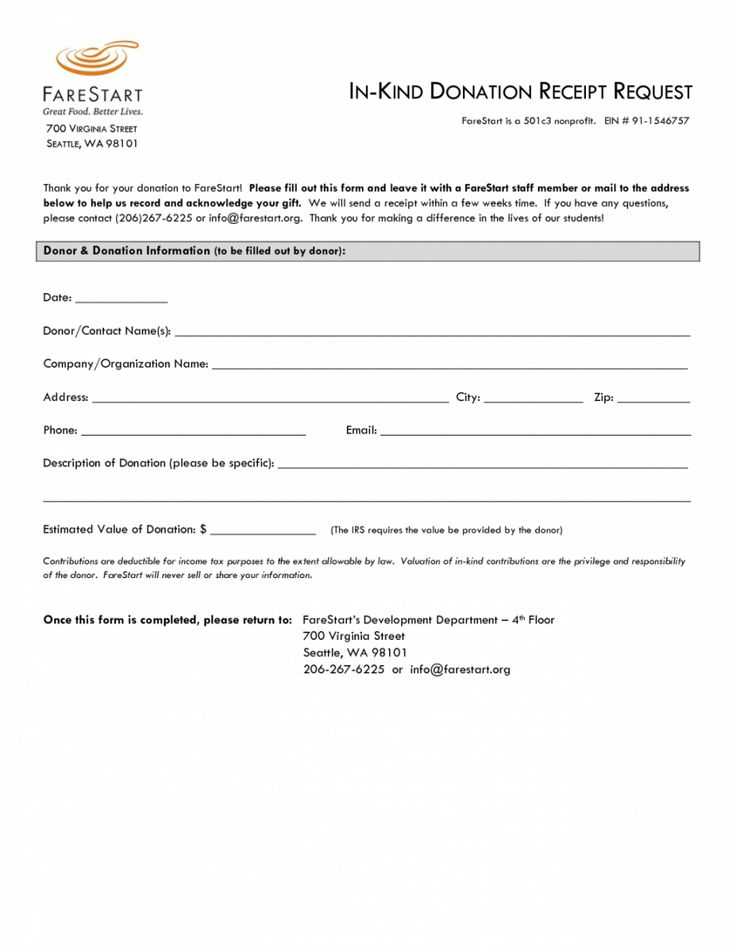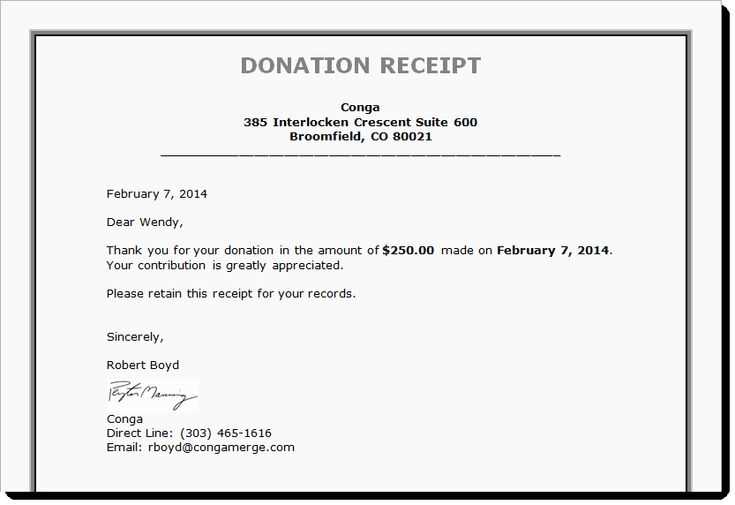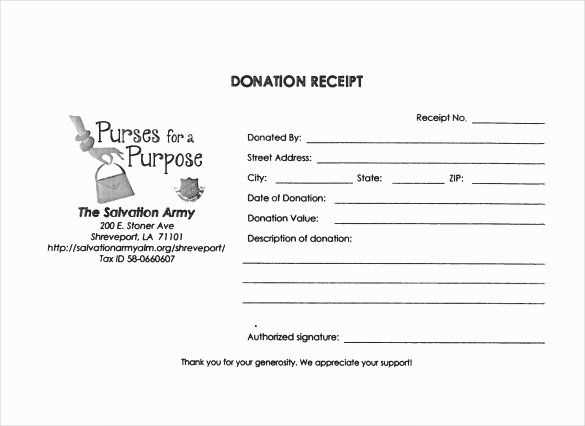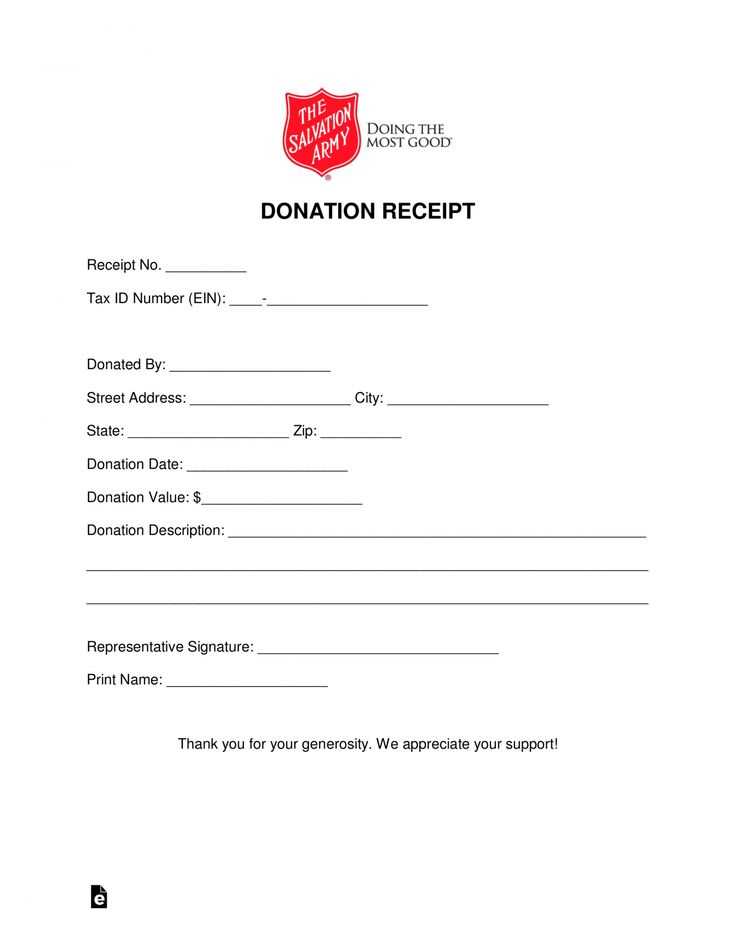
Every donation receipt should include a detailed breakdown of contributions to ensure compliance with tax regulations and maintain transparency. An itemized donation receipt lists each donated item, its estimated value, and relevant details, helping both donors and organizations keep accurate records.
To create a proper receipt, include the donor’s name, contact information, and the date of the donation. Specify whether the contribution was monetary or non-monetary. For non-cash donations, provide a description of the items and their fair market value. If the donor received any goods or services in return, disclose their estimated value to determine the deductible portion of the donation.
Nonprofit organizations should also include their name, address, and tax-exempt status. Adding a statement confirming whether the donor received anything in exchange for the contribution helps meet IRS requirements. For high-value donations, a professional appraisal may be necessary, and receipts should reflect this information.
Standardizing your receipt format saves time and reduces errors. A well-structured template with pre-filled organization details and customizable fields ensures consistency. Digital templates offer additional benefits, such as automated calculations and easy storage for future reference.
A detailed, accurate receipt not only fulfills tax documentation requirements but also strengthens donor trust. By using a structured template, organizations can streamline the process while ensuring compliance with financial and legal obligations.
Here’s your revised list with reduced word repetition while maintaining clarity and meaning:
Ensure your itemized donation receipt includes all necessary details to meet IRS requirements and provide transparency to donors.
| Field | Description |
|---|---|
| Donor Information | Full name and contact details. |
| Organization Details | Registered name, address, and tax-exempt status. |
| Receipt Number | Unique identifier for tracking purposes. |
| Donation Date | Exact date the donation was received. |
| Itemized Contributions | List of donated items or amounts with fair market value. |
| Donation Type | Specify if monetary, goods, or services. |
| Statement of No Goods or Services | Required if no tangible benefits were provided in return. |
| Authorized Signature | Representative’s signature and printed name. |
Use a clear format to improve readability and ensure compliance. Double-check figures and descriptions before issuing the receipt.
- Itemized Donation Receipt Template
Use an itemized donation receipt to provide donors with a clear breakdown of their contributions. This format ensures transparency and simplifies tax reporting.
Include the following details:
- Donor Information: Full name and contact details.
- Organization Details: Name, address, EIN (if applicable), and contact information.
- Receipt Number: A unique identifier for tracking.
- Date of Donation: The exact date the contribution was received.
- Itemized List of Donations: Specify each donated item or monetary amount with a brief description and value.
- Total Contribution: Sum of all donated amounts or item values.
- Statement of No Goods or Services: If applicable, confirm that no goods or services were received in exchange for the donation.
- Authorized Signature: A signature from an official representative of the organization.
Format the receipt professionally with clear headings and structured sections. Ensure all details align with IRS guidelines for tax-deductible donations. Providing well-organized receipts helps donors maintain accurate records and reinforces trust in your organization.
Donor and Organization Information
Include the full name and contact details of both the donor and your organization. This ensures clarity and facilitates record-keeping for tax purposes.
Donation Date and Amount
Specify the exact date of the contribution and the total amount given. If the donation consists of multiple items or payments, list each separately for accuracy.
Detailed Description of the Donation
For monetary contributions, indicate the payment method (cash, check, credit card, etc.). For non-cash donations, provide a clear description of each item, including its estimated fair market value.
Statement of No Goods or Services
If no goods or services were provided in exchange for the donation, explicitly state this. If any benefits were given (e.g., event tickets), note their estimated value.
Receipt Number and Tax Compliance Details
Assign a unique receipt number for tracking purposes. Include a statement confirming the organization’s tax-exempt status and eligibility to receive tax-deductible donations under applicable laws.
Authorized Signature
While not always required, adding an authorized representative’s signature or digital approval enhances credibility and compliance with audit requirements.
Ensure your donation receipt meets tax requirements by including specific details. Begin by listing the organization’s name, address, and tax-exempt status. Clearly state that the donor did not receive any goods or services in exchange for the contribution, as this is a key requirement for tax-deductible donations.
Key Elements to Include
Include the donation amount or description of the donated property. If the donation is non-cash, provide a brief description of the item or service. For cash donations, specify the exact amount. If the donation has a value, ensure the donor receives an acknowledgment of any goods or services provided in return and include the fair market value of those items.
Tax Deductibility Information
State clearly whether the contribution is tax-deductible. If only a portion is deductible, indicate the specific amount or percentage that qualifies for a deduction. This information helps the donor claim the appropriate deduction when filing taxes.
Keep the layout simple and structured. Use clean lines and sufficient white space to enhance readability. A cluttered receipt can be overwhelming and hard to interpret, so prioritize a clear, organized design.
- Use headings and subheadings to separate sections clearly, such as the donor’s details, donation amounts, and the organization’s information. This structure will help the reader navigate the receipt effortlessly.
- Align text consistently. For example, all financial amounts should be right-aligned to allow for easy comparison, while donor names and addresses should be left-aligned for consistency.
- Stick to a professional font, such as Arial, Helvetica, or Times New Roman. Avoid overly decorative fonts that might make the document appear unprofessional or difficult to read.
- Include clear labels for each data point. For example, label the donation amount with a prefix like “Donation Amount” to avoid any confusion.
Limit the use of bold text to key sections like total amounts or headings. Overusing bold text can distract from the core message.
- Ensure sufficient contrast between text and background. Black text on a white background is typically the easiest to read. Avoid light-colored text on dark backgrounds unless necessary for design reasons.
- Use bullet points for easy-to-scan lists, such as itemized deductions or other important details. This allows the recipient to grasp key information quickly.
Provide clear instructions for any next steps, such as tax filing guidelines or how to request a receipt for another donation. Keep these instructions straightforward and unambiguous.
Finally, use consistent formatting throughout the document. Stick to one set of date formats, one currency format, and one type of language throughout. This helps maintain professionalism and clarity in all your communications.
Double-check donation amounts. Miscalculations are common, so always verify the numbers before finalizing the receipt. A small error can cause confusion for both the donor and the organization.
Incorrect Date Formatting
Ensure the donation date is clear and formatted consistently. Mistakes in the date can lead to misunderstandings about when the donation took place, especially if donors need the receipt for tax purposes.
Missing Required Information
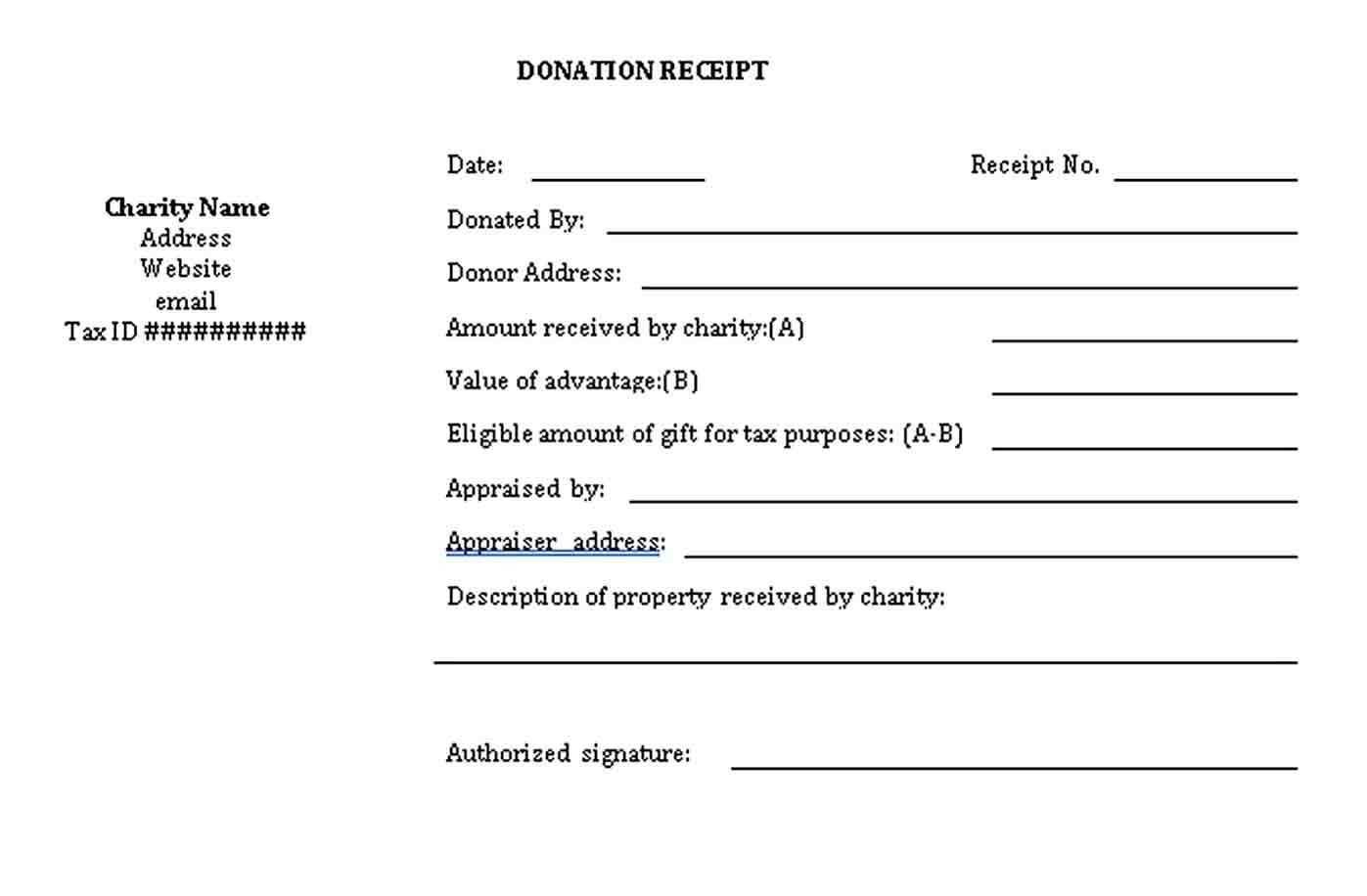
- Include all necessary details: donor’s name, donation amount, organization’s name, and tax-exempt status. Missing any of these elements can render the receipt incomplete and invalid.
- Omit vague language. Specify whether the donation was monetary, in-kind, or a combination of both to prevent ambiguity.
Provide clear descriptions for any in-kind donations. Donors may claim deductions on donated items, so include detailed descriptions to avoid any confusion.
Failing to Acknowledge Non-Cash Donations Properly
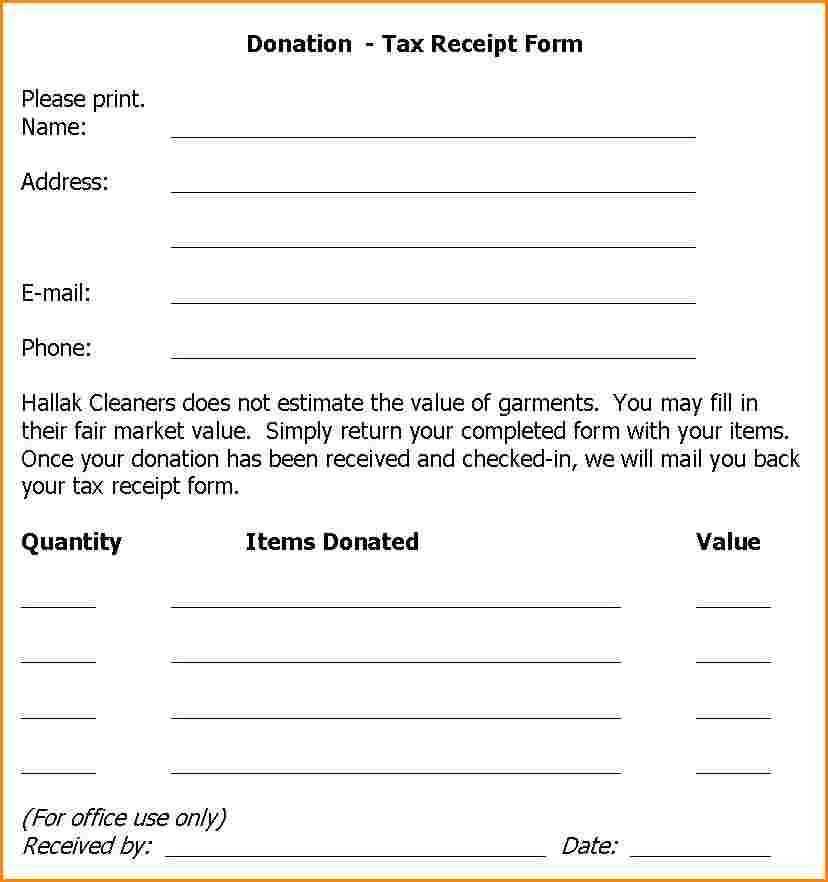
In-kind donations require specific valuation and description. Without an accurate breakdown of value, the receipt could be deemed insufficient for tax reporting purposes.
Not Updating Donation Amounts
If a donor changes the amount or makes partial payments, make sure all receipts reflect the most recent transactions. An outdated figure could affect both your record-keeping and the donor’s filing.
Take extra care with formatting and legibility. A poorly designed receipt may confuse the donor or even cause errors when filing taxes. Maintain clarity and structure throughout the document.
Opt for a digital system to ensure easy access, faster search, and secure storage. Digital records can be backed up to prevent loss and are easily organized by date or category. They also allow for quick sharing and integration with accounting software, simplifying tax reporting. Use a cloud-based service with encryption for maximum protection against data breaches.
For paper receipts, keep them in a safe, fireproof location. Use clear labeling to identify the donor, amount, and date, and sort receipts by month or year. Regularly review the storage to avoid clutter and ensure everything is in order. Consider scanning and uploading important documents to reduce physical storage needs and mitigate risks of damage.
Combining Both Methods
For optimal record-keeping, combine digital and paper approaches. Keep digital records for easy access and use paper records as a backup. Scan receipts as they come in, and keep the physical ones in a well-organized system for legal compliance. Regularly back up digital files to prevent data loss.
Storage Duration

Digital receipts are easy to store for the long term. The IRS recommends keeping donation records for at least three years. For paper receipts, make sure they are legible and stored in a manner that protects them from physical damage for the required period.
To tailor itemized donation receipts effectively, focus on the unique needs and regulations of each organization. Start by adjusting the language and branding to reflect the organization’s identity. A charity’s tone will differ from that of a religious institution or educational nonprofit, so ensure the wording matches the organization’s mission and audience.
Include Organization-Specific Information
Different types of organizations require specific details. Nonprofits may need to include IRS-required language for tax purposes, while religious groups often add statements regarding tithes or offerings. Educational institutions may list the donation as part of a campaign fund, with specific wording that highlights its purpose (e.g., scholarship fund). Customize the template to highlight these distinctions clearly and concisely.
Personalize for Donor Types
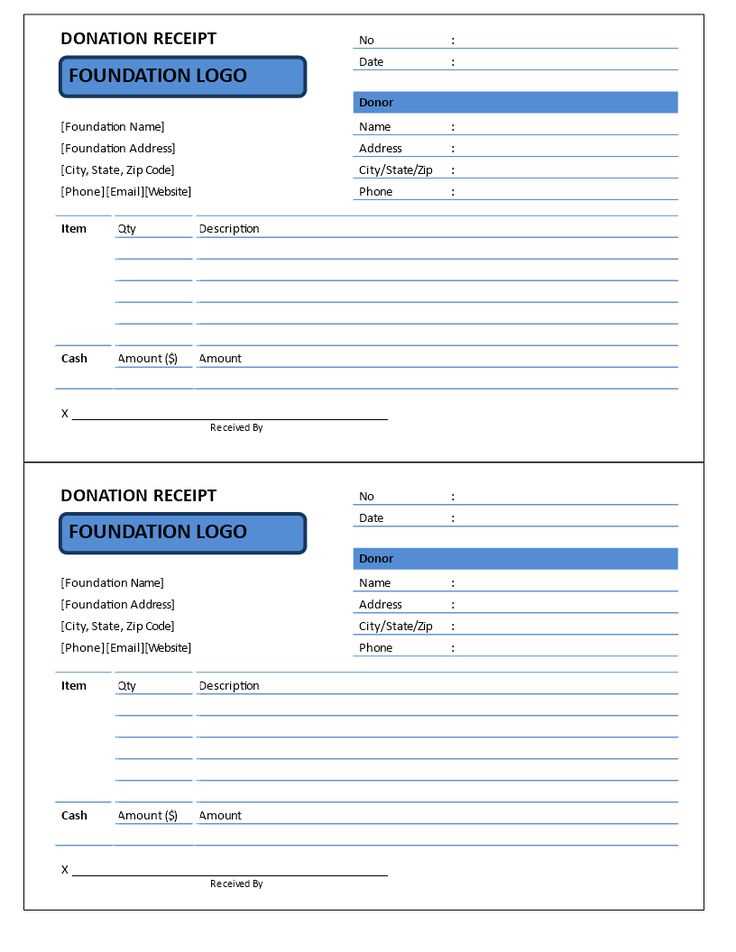
Consider the donor’s relationship with the organization. For example, corporate donations may require additional fields like business name and EIN. Individual donors might appreciate a personal touch with a handwritten signature or a personalized thank-you message. Adjust the template layout and content accordingly to match donor expectations and organizational style.
Always test templates with a few donors to ensure the receipt meets all expectations. Fine-tuning the details not only ensures compliance but also strengthens the donor’s connection to the organization.
When creating an itemized donation receipt, it’s key to provide donors with clear, detailed information. A well-structured list of items contributes to transparency and trust. Begin with the date of the donation, followed by a breakdown of each individual item contributed. Include the item description, quantity, and estimated value, specifying whether the donor’s contribution is monetary or in-kind.
For non-monetary donations, ensure to mention the condition of the items and their fair market value. If applicable, note if the donation is tax-deductible and provide any relevant disclaimers regarding the organization’s status. This ensures compliance with tax regulations and provides donors with accurate information for their records.
Additionally, make sure to include the name of the organization, a statement confirming that no goods or services were provided in exchange for the donation (if true), and a thank-you note to enhance the donor’s experience. This approach keeps the receipt both informative and professional.
